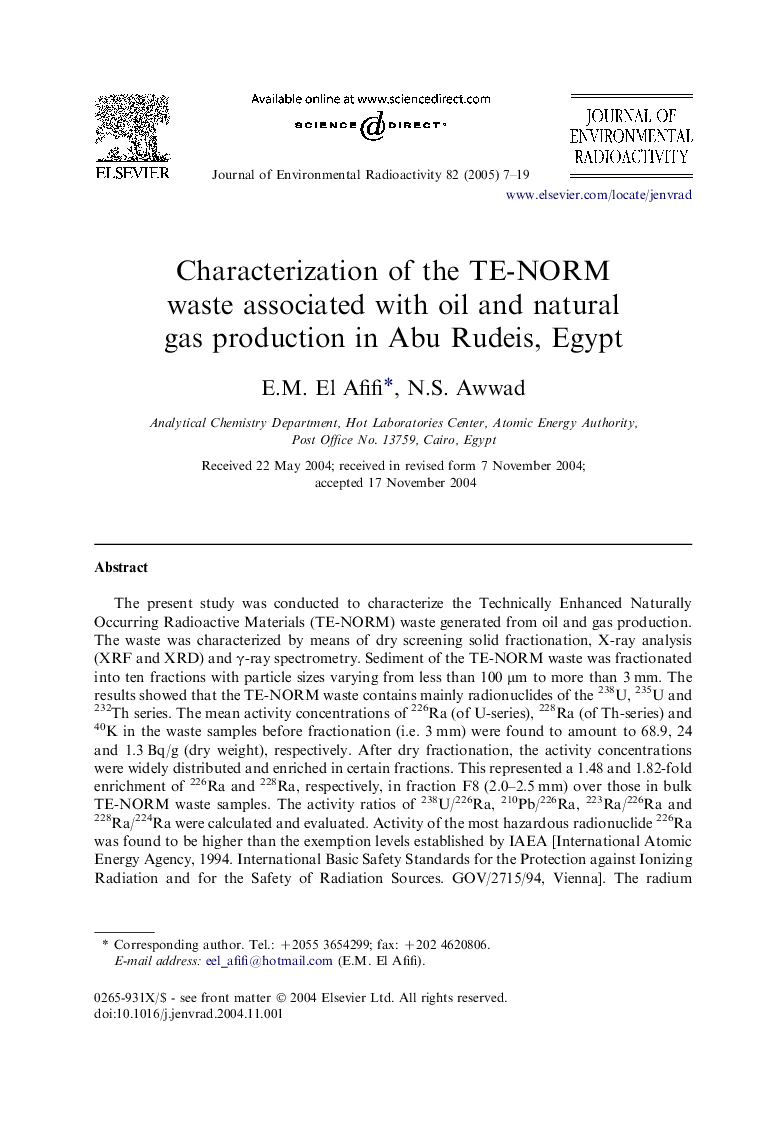| Article ID | Journal | Published Year | Pages | File Type |
|---|---|---|---|---|
| 10686872 | Journal of Environmental Radioactivity | 2005 | 13 Pages |
Abstract
The present study was conducted to characterize the Technically Enhanced Naturally Occurring Radioactive Materials (TE-NORM) waste generated from oil and gas production. The waste was characterized by means of dry screening solid fractionation, X-ray analysis (XRF and XRD) and γ-ray spectrometry. Sediment of the TE-NORM waste was fractionated into ten fractions with particle sizes varying from less than 100 μm to more than 3 mm. The results showed that the TE-NORM waste contains mainly radionuclides of the 238U, 235U and 232Th series. The mean activity concentrations of 226Ra (of U-series), 228Ra (of Th-series) and 40K in the waste samples before fractionation (i.e. 3 mm) were found to amount to 68.9, 24 and 1.3 Bq/g (dry weight), respectively. After dry fractionation, the activity concentrations were widely distributed and enriched in certain fractions. This represented a 1.48 and 1.82-fold enrichment of 226Ra and 228Ra, respectively, in fraction F8 (2.0-2.5 mm) over those in bulk TE-NORM waste samples. The activity ratios of 238U/226Ra, 210Pb/226Ra, 223Ra/226Ra and 228Ra/224Ra were calculated and evaluated. Activity of the most hazardous radionuclide 226Ra was found to be higher than the exemption levels established by IAEA [International Atomic Energy Agency, 1994. International Basic Safety Standards for the Protection against Ionizing Radiation and for the Safety of Radiation Sources. GOV/2715/94, Vienna]. The radium equivalent activity (Ra-eq), radon (222Rn) emanation coefficient (EC) and absorbed dose rate (Dγr) were estimated and these are further discussed.
Related Topics
Physical Sciences and Engineering
Energy
Nuclear Energy and Engineering
Authors
E.M. El Afifi, N.S. Awwad,
